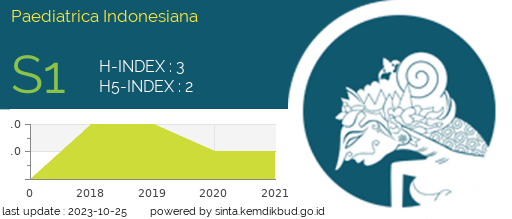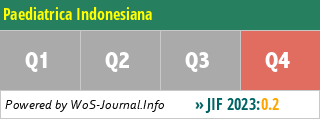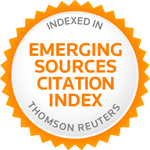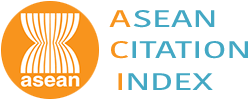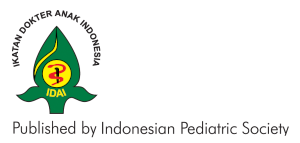Comparative study between evidence-based or problembased learning and conventional method to improve the clinical problem solving of the medical students
Abstract
The purpose of this study was to compare learning methods between the conventional and educational technology with evidence-based medicine and problem based learning methods, which is in accordance with the ability of clinical problem solving of medical students. This quasi-experimental study involed medical students at ninth semester, index of achievement ranging between 2.5–3 and worked at the Child Health Department of Dr Soetomo Hospital from January until December 2000. Data included performance of history taking, physical examination, summary, diagnosis, planning examination, therapy, complication, prognosis, pathophysiology and total score. All of variables were analyzed by using t test with p < 0.05 was considered to be significant. We found significant difference between the two groups in terms of history taking, building the summary; establishing diagnosis, planning further investigations, planning treatment, predicting complication, and describing the pathophysiology, and total scores, but did not see any difference physical examination t = 0.3 p > 0.05 and in predicting prognosis. We concluded that the use of educational technology with problem-based learning and evidence-based medicine methods significantly improve the problem clinic solving of the medical students.
References
2. Wehter, William B. Human resource and personal management. New York: Mc Graw-Hill International; 1989. p. 114-8.
3. Hasibuan. Malayu organisasi dan motivasi. Jakarta: Bumi Aksara; 1996. p. 25-9.
4. Siagian S. Teori motivasi dan aplikasinya. Jakarta: PT Bina Rupa Aksara; 1989. p. 15-27.
5. Birken CS, Parkin PC. Which journals will pediatricians find the best evidence for clinical practice. Pediatrics 1999;103:914-7.
6. Evidence-based Medicine Working Group. Evidence based Medicine–a new approach in teaching the practice of medicine. JAMA 1992; 268: 2420-5.
7. Dolmans DH, Schmidt HG. What drives the student in problem based learning? Med Educ 1994; 28:372-80.
8. Adderly KW, Ashuin C. The use of project methods in higher education. London: Society for research in higher education; 1976. p. 114-9.
9. Kozma RB, Belle LW, Williams GW. Instructional techniques in higher education. New Jersey: Educational Technology Pub; 1978. p. 56-62.
10. Bower, Gordon. Theory of learning. 5th ed. New Jersey: Printing Hall. Inc; 1981. p. 25-48.
11. Croupley AJ. Motivation for participation in adult education. Pada: JH Knoll, editor. Motivation for adult education. Bonn: German Commission for UNESCO, 1985.
12. Keller JM. Motivation design of instruction, in: Hilldask, editor. Instructional design theory an models: An overview of their current status. Hilldask: Lawrence Erlbaum
Associates; 1983. p. 98-115.
13. Vembriarto ST. Pengantar pengajaran modul. Yayasan Pendidikan Paramita, Jogjakarta; 1975. p. 15-24.
14. Albans MA, Mitchell S. Problem-based learning: A review of literature on its outcomes and implementation issues. Acad Med 1993; 68: 550-63.
15. Mandsky G. Do we all mean the same thing by “Problem based learning†A review of the concepts and a formed of the ground rules. Acad Med 1999; 74:78-85.
Authors who publish with this journal agree to the following terms:
Authors retain copyright and grant the journal right of first publication with the work simultaneously licensed under a Creative Commons Attribution License that allows others to share the work with an acknowledgement of the work's authorship and initial publication in this journal.
Authors are able to enter into separate, additional contractual arrangements for the non-exclusive distribution of the journal's published version of the work (e.g., post it to an institutional repository or publish it in a book), with an acknowledgement of its initial publication in this journal.
Accepted 2016-11-22
Published 2006-10-30

